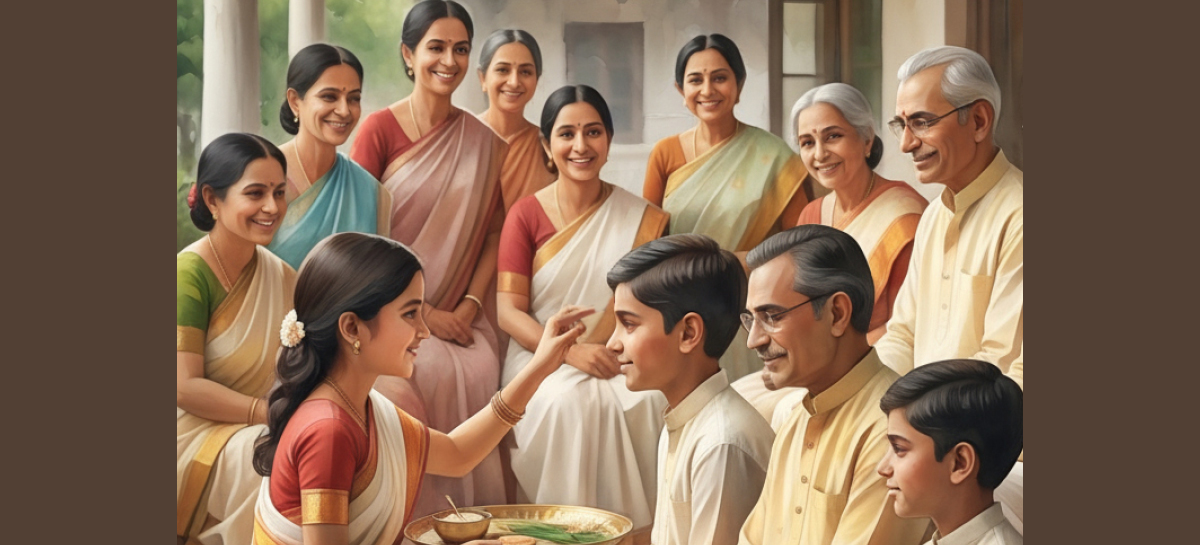Festivals often hold more than ritual significance—they become cherished family traditions that bind generations together, as our member Ms K. Chatterjee fondly remembers.
I have an elder brother, but having grown up in a joint family where we were never taught to discriminate between true siblings and cousins, I always felt I was one of seven or eight siblings. My grandfather had two brothers, and the descendants of all three grew up under the same roof.
We were a refugee family; our elders had migrated from East Bengal during Partition. We never had much money, but the emphasis was always on sharing whatever we had and focusing on personal development through intellectual and cultural growth. We would read together, practise our arts together, and these activities brought us closer as siblings.
On Bhai Phota, three generations—my grandmother’s brothers, my mother’s brothers, my aunt’s brothers, and our own—would all gather in the verandah and sit next to each other on low stools called pedis (we did not have tables or chairs back then). We would arrange the paraphernalia for the phota: kohl, ghee, sandalwood paste, honey, and small lamps. Then, chanting the mantras, we would dip our little fingers into the mixtures and apply teekas (marks on the forehead) on our respective brothers. Each brother would receive a spotless white vest from a brand called Gopal.
Meals were non-vegetarian on such days. We would have duck-egg curry, where each egg would be sliced not perpendicularly, which would make the two halves nouka-shaped (boat-shaped), but through the middle so that the two halves looked like dugi-tablas (percussion instruments). We would enjoy the yolks the most, saving them for the end of the meal. No meal was without its share of drama, as our naughty brothers would tease us by stealing our eggs! They would really draw out our agony before returning them.
These gatherings would always end with a family cultural performance by the more talented members. The tradition continued into the next generation—my daughter would dance, and I would sing with my son accompanying me on the tabla. My grandfather would then jokingly admonish me, “There you go, showing off your children! Do you think mine are talentless? Anju,” he would call out loudly to my mother, “Come, dance to Himelo Raate Oi Gogone!” And my mother, shy because my husband and my father, would be in the audience, would put up a beautiful recital.
Where are those Bhai Phota evenings today? Most of those people are no more. I truly miss those days of my youth. They were simpler times—people had so much heart. Sometimes it all feels like a dream…
(as narrated to Support Elders by our member)


